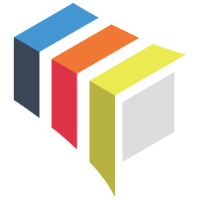QUESTIONS? CALL:
+1 (833) BOODSKAp
Smart Traffic Management with Boodskap's IoT Platform
PRODUCT DESCRIPTION
- Smart traffic management using IoT technology transforms the way cities handle traffic flow and congestion. By leveraging IoT-enabled devices and sensors, municipalities can achieve real-time visibility and control over traffic conditions. This advanced approach reduces traffic jams, enhances road safety, and improves the overall commuting experience. Boodskap's IoT Platform as a Service (PaaS) offers comprehensive solutions for smart traffic management, integrating various sensors and devices to deliver actionable insights and predictive analytics.
- Boodskap’s IoT platform enables city planners and traffic management authorities to collect, analyze, and act on data from various IoT sensors. The platform’s robust data analytics and visualization tools provide real-time monitoring of traffic flow, vehicle movement, and road conditions. This helps cities make informed decisions to optimize traffic signals, reduce congestion, and enhance road safety.
- Traffic Cameras:For real-time video monitoring of traffic conditions.
- Smart Traffic Lights: Adaptive traffic lights that adjust based on real-time traffic data.
- Vehicle Detectors:Sensors embedded in roads to detect vehicle presence and count.
- Radar Sensors: Measure vehicle speed and detect approaching vehicles.
- Camera Sensors:Monitor and analyze traffic flow and detect incidents.
- Inductive Loop Meters:Embedded in the pavement to detect vehicle presence and count.
- Environmental Sensors: Measure weather conditions affecting road safety (e.g., rain, fog).
- LoRaWAN:Provides long-range connectivity for traffic sensors deployed across the city.
- Cellular: Ensures reliable communication for mobile and distributed traffic management systems.
- MQTT (Message Queuing Telemetry Transport): Lightweight messaging protocol used for real-time data transmission between traffic sensors and the IoT platform.
- DSRC (Dedicated Short-Range Communications): Enables vehicle-to-infrastructure (V2I) communication for smart traffic lights and other roadside units.
- A city using Boodskap’s IoT platform implements camera sensors and radar sensors at major intersections and along busy roads. Smart traffic lights equipped with adaptive control systems adjust signal timings based on real-time traffic data. Inductive loop sensors embedded in the roads detect vehicle presence and count. Environmental sensors monitor weather conditions impacting road safety. All collected data is transmitted via LoRaWAN and cellular networks to the Boodskap platform. The platform analyzes the data, providing insights into traffic flow, congestion hotspots, and road conditions. City planners can view these insights on a dashboard, enabling them to make timely decisions on traffic signal adjustments and incident management. This leads to improved traffic flow, reduced congestion, and enhanced road safety.
- Real-time monitoring and adaptive traffic signals help alleviate traffic jams.
- Timely detection of incidents and hazardous conditions improves response times and reduces accidents.
- Automated data collection and analysis streamline traffic management processes, reducing manual efforts.
- Optimized traffic flow and reduced congestion enhance the overall commuting experience. By leveraging Boodskap’s IoT platform, cities can significantly enhance their traffic management processes, leading to improved traffic flow, road safety, and commuter satisfaction.

